This is the puzzle of ‘England’s rectangular cows,’ an artistic mystery that has intrigued minds for years.
Envision a gallery where each frame holds a secret. A solitary cow takes center stage, its presence strikingly real, yet strangely abstract.
What captures the eye is the uncanny rectangular shape into which these cows have been crafted.
What gives rise to this curious phenomenon? What artistic currents, what societal undercurrents, conspired to create these peculiar depictions?
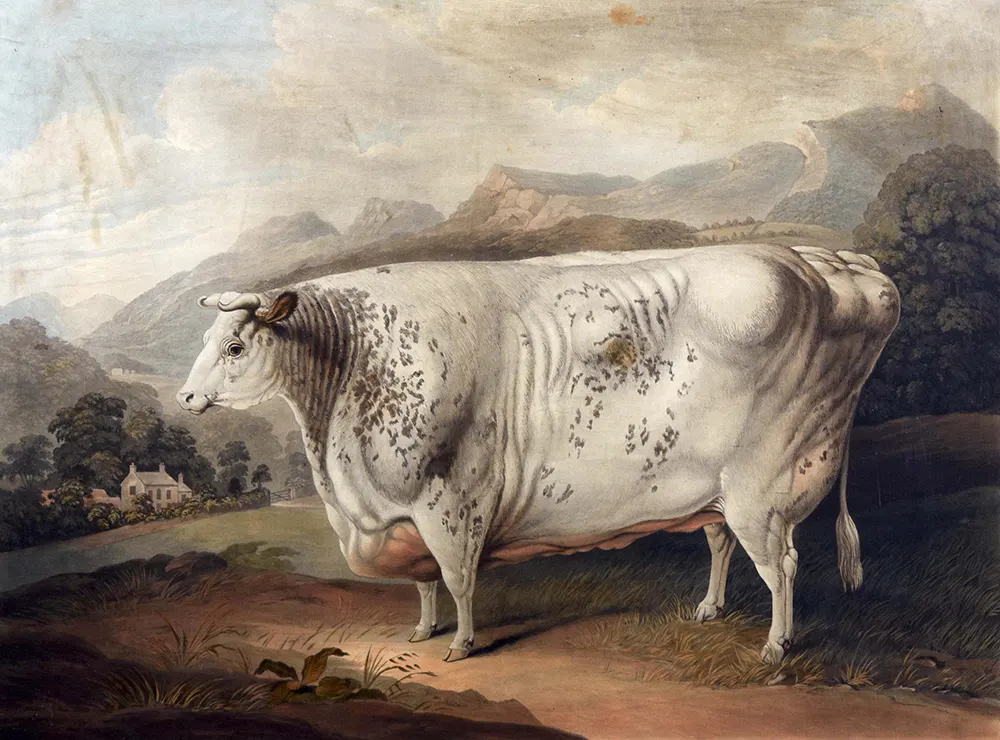
During the 19th century in England, prosperous farmers sought to showcase their wealth and status by commissioning artwork that portrayed their livestock, including cows, pigs, and sheep.
These commissioned pieces often featured exaggerated depictions of animals with unusual proportions.
For instance, pigs might be portrayed as round as inflated footballs, cows elongated into rectangular forms, and sheep stretched into ovals.
This artistic trend coincided with a period when farmers were actively experimenting with selective breeding and innovative feeding methods to cultivate larger livestock.

During this period, the art of depicting livestock was at its pinnacle. Racehorses were commonly portrayed with sleek lines that conveyed their speed and elegance.
However, for farm animals, a robust physique took precedence. In these paintings, cows, sheep, and pigs were depicted as massive figures, oddly balanced on their four spindly legs.
On occasion, the owner of the animals would be included in the artwork, gazing proudly at their prized possessions.
Alternatively, the animals would stand alone, often portrayed as if they could consume an entire nearby village. The resulting images served as both advertisements and captivating spectacles.

Large animals held great value as evidence of their owners’ success in breeding for size and weight.
Wealthy and experienced farmers achieved this by using selective breeding methods that led to the growth of quick-developing, hefty livestock.
Alongside these breeding efforts, innovative farming and feeding practices contributed to the overall increase in animal size.
Termed as “improvers,” these individuals were driven to enhance existing animal breeds. Popularized methods, like feeding cows oil cakes and turnips to fatten them up before slaughter, became widespread.
Commissioned paintings and commercial prints frequently included details such as an animal’s measurements and information about the owner’s breeding efforts.
According to animal studies expert Ron Broglio, these portraits often exaggerated the animals’ features to create the idealized form, often involving “adding a bit more fat in crucial areas.”
For instance, pigs were envisioned in an American football-like shape, cows were depicted with a rectangular silhouette, and sheep tended to lean towards an oblong shape.
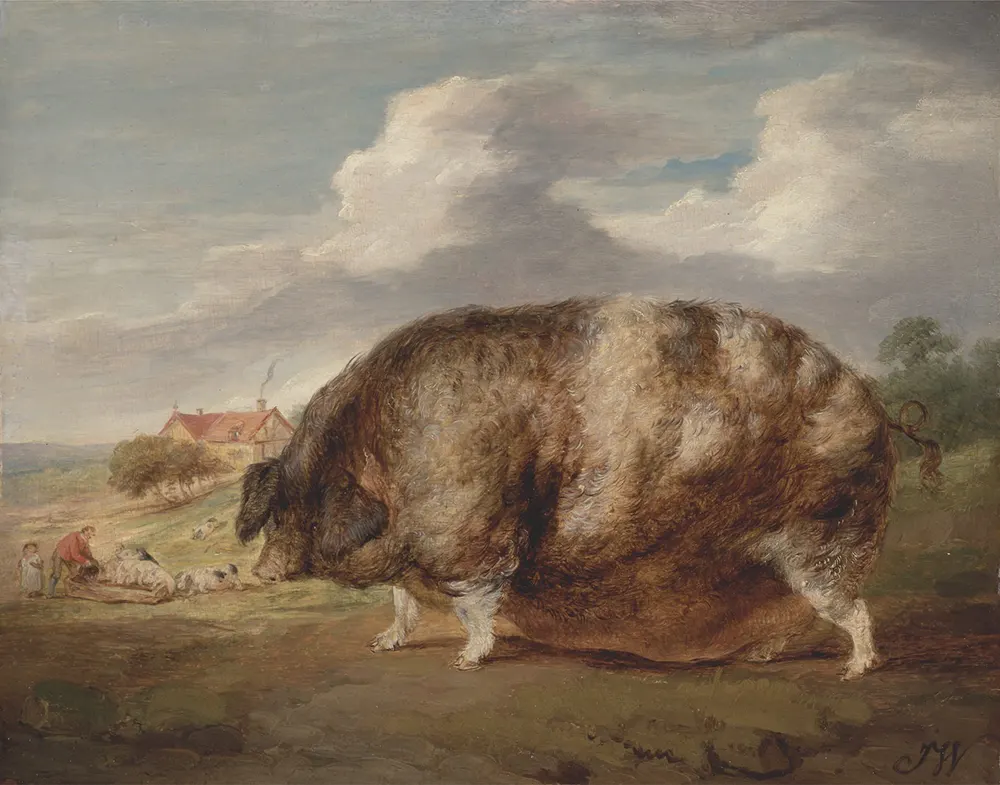
Two factors combine to give the cows their distinct angular appearance. Firstly, it’s the squared rump, though the reason for this remains a puzzle.
Secondly, attention is drawn to the pronounced bulge in front of their front legs—the brisket. Interestingly, the research also reveals that during cattle competitions or evaluations, this brisket plays a pivotal role.
According to cattle breeders, ‘the brisket (the flap on a cow’s neck) comprises mainly of fat and skin. We usually aim for a full brisket, indicating that the animal has reached an optimal level of muscle development and finishing.
Excessive finishing might result in a ‘messy’ look, where the skin folds over, resembling the double chins we see in humans. The preferred presentation involves taut skin and a plump brisket.’
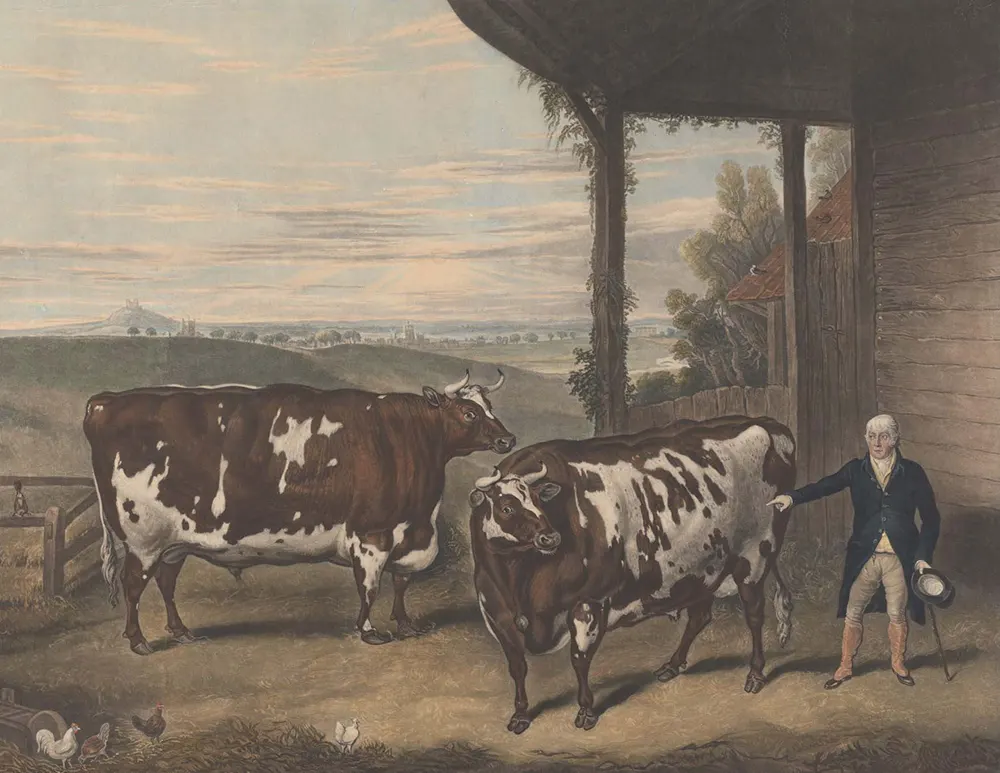
Besides making wealthy farmers famous, animal paintings and prints had a useful purpose.
Farmers all over the country could use a certain animal’s picture as an advertisement for their own animals.
Animals that looked good were worth more money, showing how looks played a big role in deciding how to breed animals.

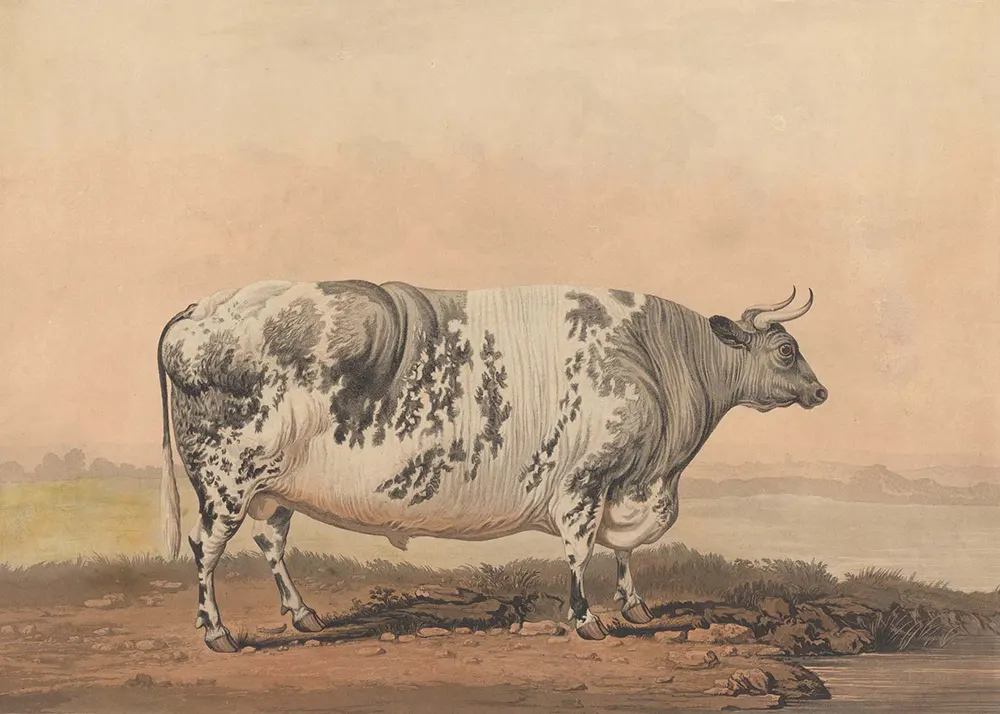

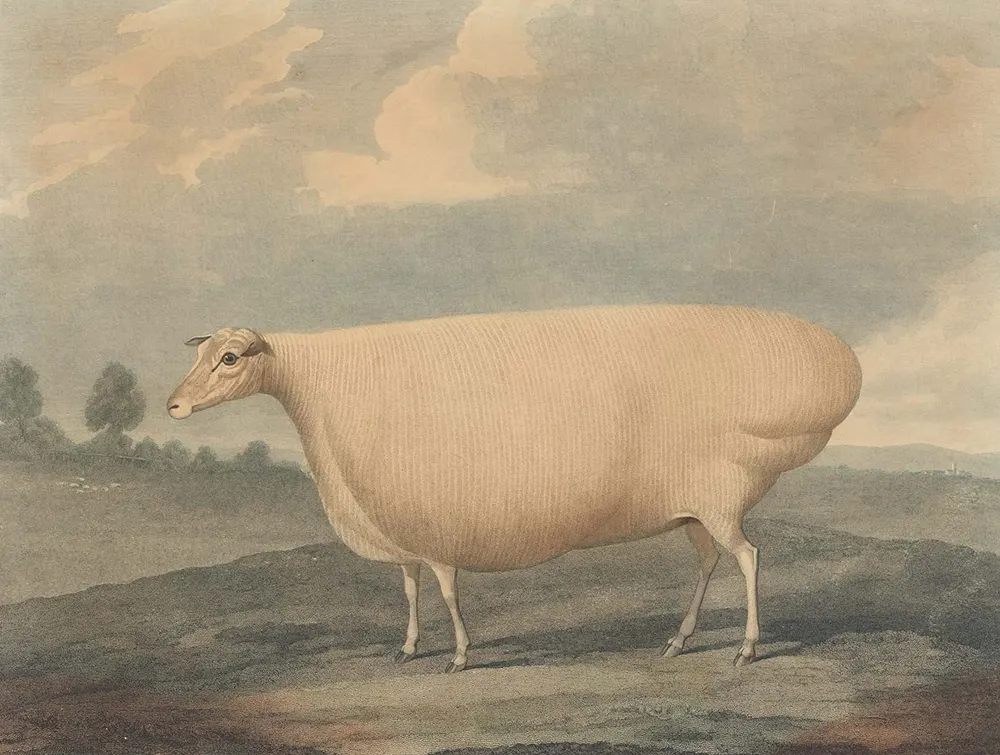


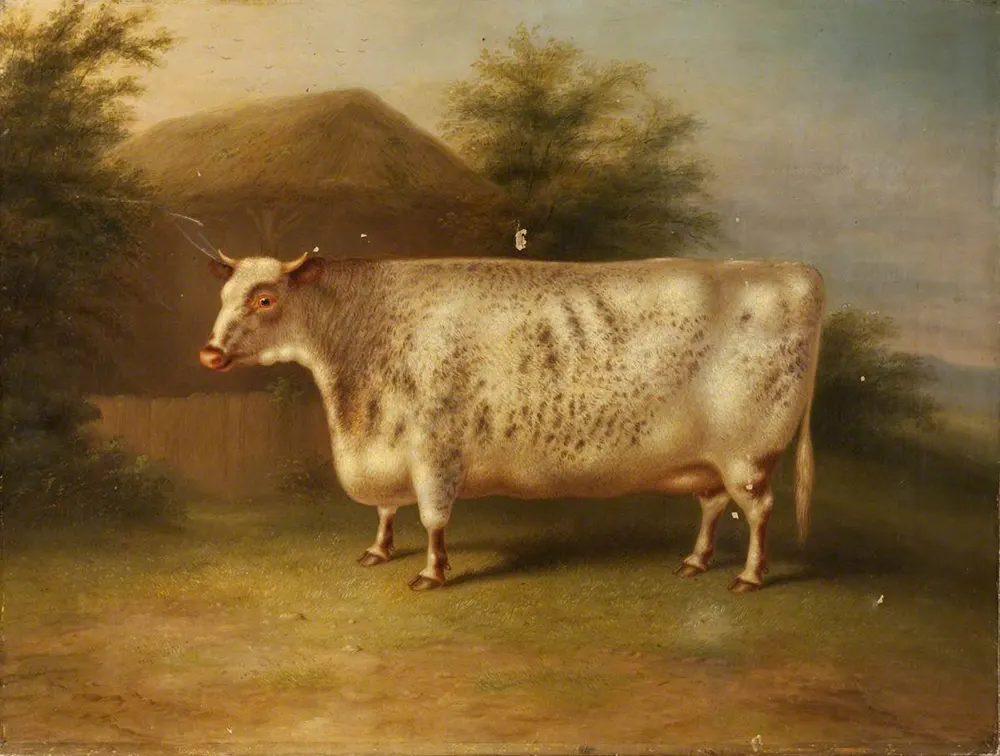





The celebrity ‘Durham Ox’ – a bull so large it drew in crowds to marvel at its size – showed what could be done (and aspired to), and owners of prize livestock became increasingly proud of the animals they had bred.
The ox in this particular painting is a real monster.
It towers above the tiny man in his nice coat and top hat, who holds a kind of harness that looks like it’d barely make it over the beast’s neck.


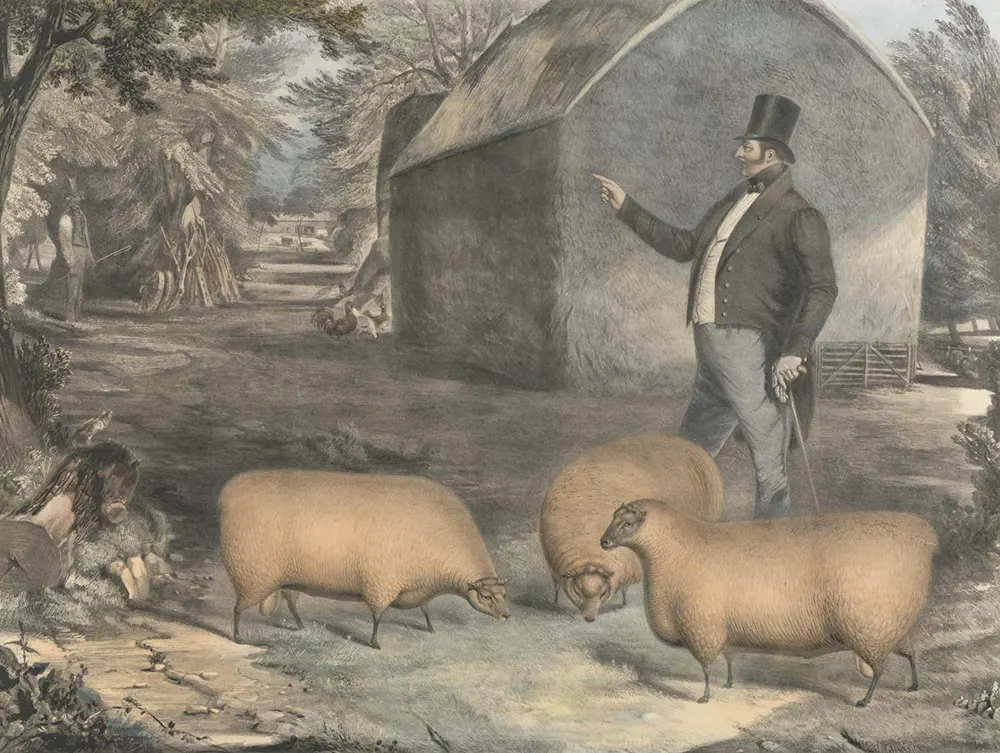
(Photo credit: Wikimedia Commons / Flickr / Pinterest / artuk.org).